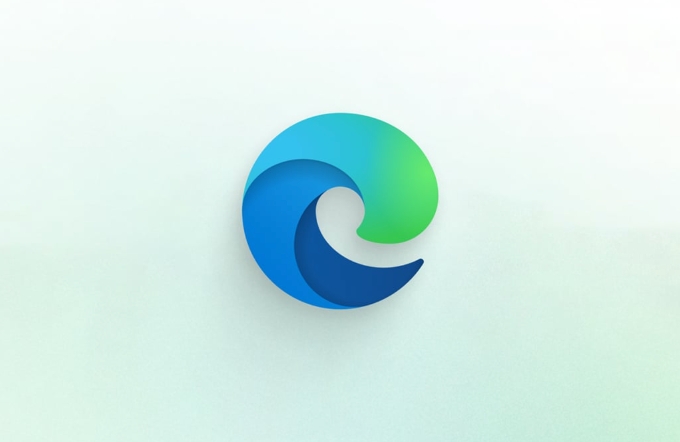Microsoft Edge may keep creating desktop shortcuts due to default setup behaviors, especially after updates or reinstallation. 1. Check Edge settings and disable the “Create a shortcut on the desktop” option. 2. Advanced users can disable shortcut creation via Group Policy under Microsoft Edge settings. 3. Modify the Windows Registry at HKEY_LOCAL_MACHINE\SOFTWARE\Policies\Microsoft\Edge to block shortcut behavior with caution. 4. Use third-party tools like Edge Reset Blocker to manage unwanted changes. Additionally, avoid installers with optional offers, monitor settings post-updates, or use scripts to automatically remove unwanted shortcuts, ensuring the issue doesn’t return after fixes are applied.

If you're using Microsoft Edge and notice that it keeps creating desktop shortcuts, you're not alone. This behavior is often triggered by certain built-in features or installation behaviors of the browser. While it might seem annoying at first, understanding why it happens—and how to stop it—can save you a lot of frustration.

Here’s what usually causes this issue and how you can fix it.
Why Edge Keeps Adding Desktop Shortcuts
Microsoft Edge, especially when updated or reinstalled, sometimes adds desktop shortcuts as part of its default setup process. This is more common after Windows updates or if Edge was reset to defaults. It may also happen if you've allowed optional offers during installation, such as "Create a shortcut on the desktop."

This isn't malware—it's just how Edge is configured out of the box in some cases.
How to Stop Edge from Creating Desktop Shortcuts
There are a few different ways to prevent Edge from automatically adding these shortcuts:

Check Edge Settings:
Open Edge → go toSettings→Startup, home page, and new tabs. Look for an option like “Create a shortcut on the desktop” and make sure it’s unchecked (if available).Disable via Group Policy (for advanced users):
If you're comfortable editing policies, you can use the Local Group Policy Editor (gpedit.msc) and navigate toComputer Configuration > Administrative Templates > Microsoft Edge. Look for policies related to shortcut creation and disable them.Use Registry Edits (with caution):
You can modify the Windows Registry to prevent shortcut creation. Look underHKEY_LOCAL_MACHINE\SOFTWARE\Policies\Microsoft\Edgeand set the appropriate keys to block shortcut behavior. Be careful with registry edits—they can affect system stability if done wrong.Use a Third-Party Tool:
Some tools let you control shortcut creation behavior without diving into system settings. Tools like Edge Reset Blocker or similar utilities can help manage unwanted changes.
Preventing Future Shortcut Creation
Even after stopping the current issue, it's worth making sure future updates or resets don’t bring the problem back. Here are a few tips:
- Avoid reinstalling Edge through standard installers that include optional offers.
- Regularly check your Edge settings after major Windows updates.
- Use a script or scheduled task to monitor and delete unwanted shortcuts automatically (for tech-savvy users).
If you're seeing multiple Edge shortcuts pop up regularly, the cause is likely tied to how Edge is configured or how it interacts with Windows updates. The fixes aren’t complicated, but they do require a bit of attention to detail.
Basically, you need to either disable the shortcut option directly in Edge, adjust system policies, or automate cleanup if needed. Once set up correctly, the issue should stay gone.
That’s about all there is to it—annoying, but manageable.
The above is the detailed content of Microsoft Edge keeps creating desktop shortcuts. For more information, please follow other related articles on the PHP Chinese website!

Hot AI Tools

Undress AI Tool
Undress images for free

Undresser.AI Undress
AI-powered app for creating realistic nude photos

AI Clothes Remover
Online AI tool for removing clothes from photos.

Clothoff.io
AI clothes remover

Video Face Swap
Swap faces in any video effortlessly with our completely free AI face swap tool!

Hot Article

Hot Tools

Notepad++7.3.1
Easy-to-use and free code editor

SublimeText3 Chinese version
Chinese version, very easy to use

Zend Studio 13.0.1
Powerful PHP integrated development environment

Dreamweaver CS6
Visual web development tools

SublimeText3 Mac version
God-level code editing software (SublimeText3)

Hot Topics
 7 Popular Ways to Save Links to Read Later
Jun 22, 2025 am 09:32 AM
7 Popular Ways to Save Links to Read Later
Jun 22, 2025 am 09:32 AM
Pin Links to Pinterest Pinterest is often seen as a social media platform, but many users treat it as their go-to bookmarking service. Its layout is ideal for this purpose, letting you set up individual boards and pin links connected to images for si
 How to Disable Protected Mode in Internet Explorer
Jun 21, 2025 am 11:04 AM
How to Disable Protected Mode in Internet Explorer
Jun 21, 2025 am 11:04 AM
This article describes the process of disabling Protected Mode in Internet Explorer, both through the browser interface and via the Windows Registry. The instructions are applicable to Internet Explorer versions 7, 8, 9, 10, and 11 installed on Windo
 Google Chrome Speed ??Browser Official Edition Portal
Jul 08, 2025 pm 02:30 PM
Google Chrome Speed ??Browser Official Edition Portal
Jul 08, 2025 pm 02:30 PM
Google Chrome is a free and fast multi-platform web browser developed by Google. It is known for its speed, stability and reliability. Chrome is based on the open source Chromium project and is widely used on devices such as desktops, laptops, tablets and smartphones. The browser has a clean interface and a wide range of customizable options, allowing users to personalize it according to their preferences. In addition, Chrome has a huge library of extensions that provide additional features such as ad blocking, password management and language translation, further enhancing the browsing experience.
 12 of Our Favorite Chrome Extensions
Jun 28, 2025 am 10:59 AM
12 of Our Favorite Chrome Extensions
Jun 28, 2025 am 10:59 AM
Best Chrome Extension for Gmail: Checker Plus for Gmail Offers instant updates upon receiving new emails. Removes the need to keep a Gmail tab constantly open. What We Don’t Like – No visual customization features available. Badge notifications o
 How to pin extensions to the Chrome toolbar
Jul 02, 2025 am 12:28 AM
How to pin extensions to the Chrome toolbar
Jul 02, 2025 am 12:28 AM
To pin Chrome extensions to the toolbar, first visit chrome://extensions/ or enter the extension page through the menu, find the target extension and check "Show in the toolbar". Some versions support dragging and dropping to adjust the order of icons. 1. Click the three dots in the upper right corner → More tools → Extensions; 2. Find the desired extension and enable the "Show in Toolbar" option; 3. Optional: Drag the icon to adjust the position in the toolbar. Note: Not all extensions support display in the toolbar, and if there are too many icons, they will be automatically hidden.
 How to edit autofill in chrome
Jul 01, 2025 am 12:02 AM
How to edit autofill in chrome
Jul 01, 2025 am 12:02 AM
To manage Chrome's automatic filling information, follow the following steps: 1. Address information can be added, edited or deleted in "Settings → Autofill → Address and More"; 2. Login password can be updated in "Settings → Autofill → Password"; 3. Credit card information is maintained in "Settings → Autofill → Payment Method", please note that the CVV code will not be saved; 4. When using multiple devices, the synchronization function should be enabled to ensure the data is consistent. Regularly checking and updating this information can avoid filling incorrectly.
 How to Stop Google From Tracking Your Searches
Jul 01, 2025 am 09:14 AM
How to Stop Google From Tracking Your Searches
Jul 01, 2025 am 09:14 AM
This article explains the kind of information Google tracks about you, how it uses this information, and what you can do to better protect and safeguard your Google searches. What Information Does Google Track? Google logs all of your search
 Is Chrome Remote Desktop secure
Jul 02, 2025 am 12:40 AM
Is Chrome Remote Desktop secure
Jul 02, 2025 am 12:40 AM
ChromeRemoteDesktop is relatively safe, but the following three points should still be noted: 1. Its encryption mechanism relies on Google account security. It is recommended to enable two-step verification and regularly check the login device; 2. The permission control is weak. After connecting, the other party can fully control the computer. It should accept the request carefully and cancel the temporary pairing in a timely manner; 3. There are potential vulnerabilities, and the software needs to be updated and uninstalled components that are no longer used to reduce risks.






